WERE THESE BROOKLYN’S FIRST CO-OPS? (1899)
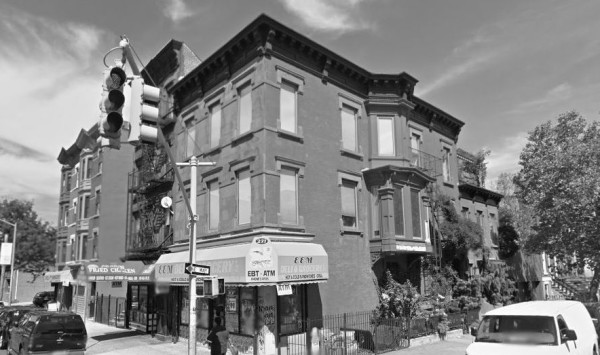
******************************************************************************************************************************** Brownstone Detectives investigates the history of our clients’ homes. The story you are about to read was composed from research conducted in the course of one of those investigations. Do you know the history of YOUR house? ******************************************************************************************************************************** Back in 1899, Bolton Hall, the son-in-law of lawyer and real estate investor, William H. Scott, convinced Scott to allow him to use some of his real estate units to experiment with a “novel co-operative idea.” “Mr. Hall’s idea was simply to let tenants share the profits of the property they occupied,” noted the New-York Tribune. “Previous to April, this year, Mr. Scott was the owner of houses at Nos. 231, 223, 225, 219, and 221 Reid-ave., Brooklyn. The property lies between Hancock st. and Jefferson ave., and consists of three single and two double houses.” Hall, who would spend his life working on behalf of the poor, had started the “back-to-the-land movement” in the United States at the time, which was a forerunner of the Green Thumb project and consisted of encouraging people to begin gardens on vacant lots. Hall noted that the tenants of the buildings eagerly entered the scheme and that during a 4-month period the plan was successful. Hall told the tenants that it was proposed to value the buildings at ten times their proper rent when full, which would be $8,000 each for the single houses and $14,000 for the double,” noted the New York Times, “and to reserve as Mr. Scott’s share 5 per cent. […]
TO DENY A “COLORED” BLOCK PARTY (1920)
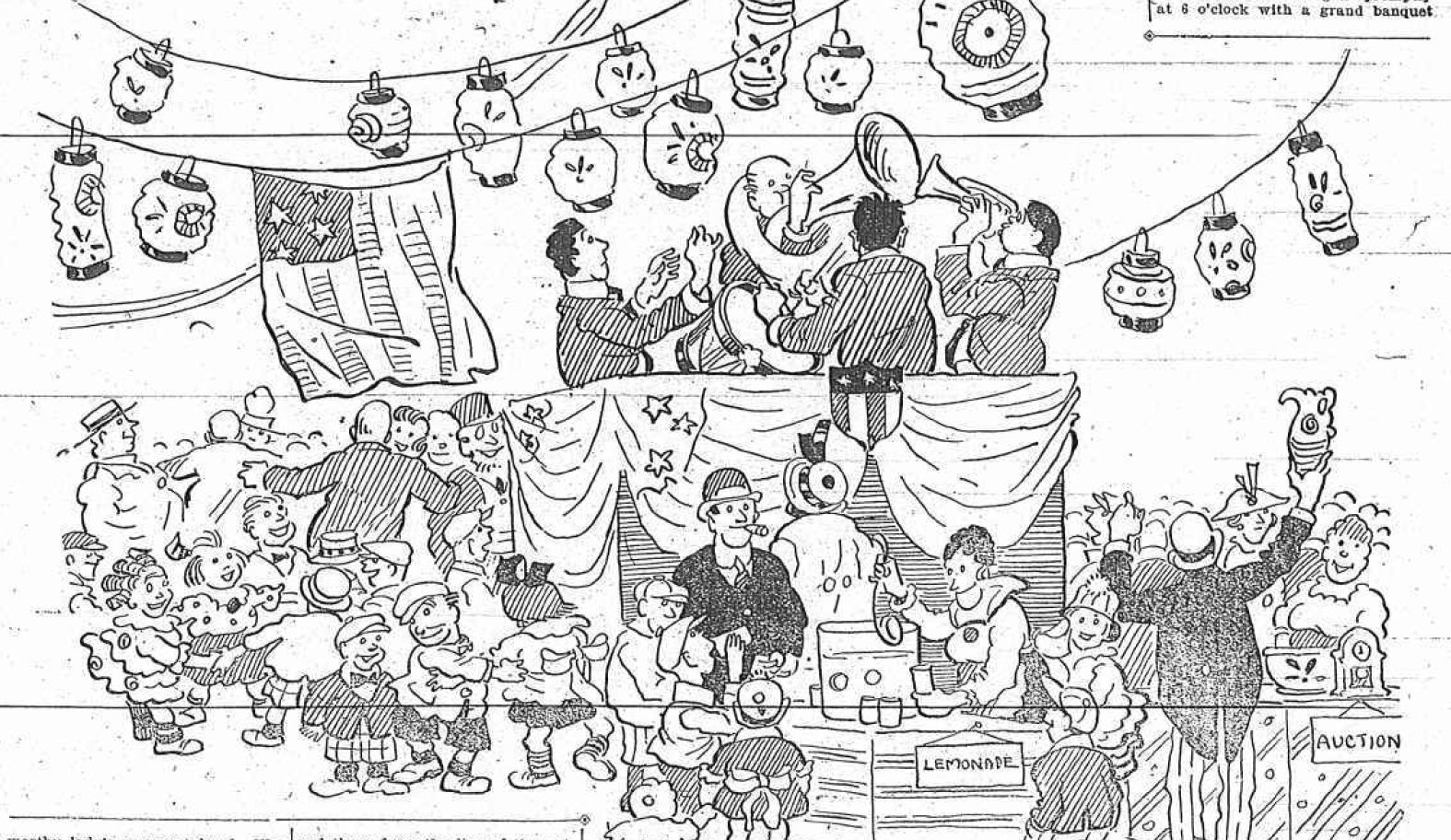
******************************************************************************************************************************** Brownstone Detectives investigates the history of our clients’ homes. The story you are about to read was composed from research conducted in the course of one of those investigations. Do you know the history of YOUR house? ******************************************************************************************************************************** Block party season upon us. It is a time of blocked-off streets, replete with the sounds of children happily playing, the smells of barbecues up and down the block, and carefree feelings of the beginning of summer. But this is also a time to remember some freedoms that were not always available to certain citizens – those freedoms for which struggles were necessary that they may be obtained. As such, it is instructive to remember how one group of people was often at the mercy of the whims of another. This story tells a tale that took place in 1920 when block party permits were not always so easy to obtain, particularly when the freedoms of those in the minority were proscribed by those in the majority… THE TRICKLE STARTS… In the mid-1930s, after the “A Train” had been extended into Brooklyn, African-Americans began to move in large numbers from Harlem into Bedford-Stuyvesant. Although the Eighth Avenue Express was the vehicle for that migration, the impetus was a desire for less crowded neighborhoods, more plentiful jobs (at the Brooklyn Navy Yard), and better housing conditions. The trickle that started this migration, though, began about 10 to 20 years earlier as African-American professionals of southern and Caribbean descent made their way to […]
THE CRUMBLING OF MACON & MALCOLM
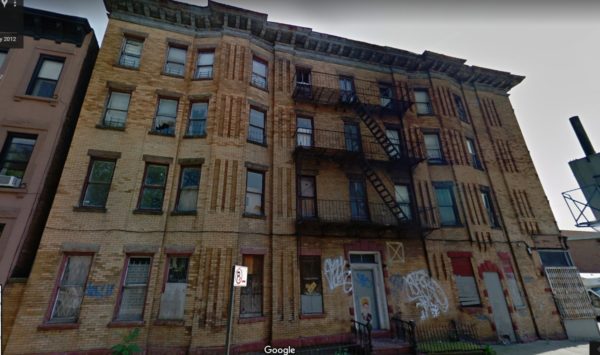
******************************************************************************************************************************** Brownstone Detectives investigates the history of our clients’ homes. The story you are about to read was composed from research conducted in the course of one of those investigations. Do you know the history of YOUR house? ******************************************************************************************************************************** (This post has been updated as of 8 February 2021.) The apartment building at the corner of Malcolm X Boulevard and Macon Street, No. 265 Malcolm X Blvd/546 Macon Street, which was constructed ca. the 1890s, has experienced an increased deterioration in the past 20 years. Although we don’t have a current snapshot of the building, the Department of Buildings notes that there is a sidewalk shed there, the existence of which was likely due to a failure to maintain building (i.e., falling glass, mortar, cornice, &c.). The building is currently owned by the Mission Field Church. The property has 12 complaints and 33 open violations. See in pictures how the structure has deteriorated over just the past ten years. Follow @BrownstoneDetec Share ———————————————————————————————————————– The Brownstone Detectives Brownstone Detectives is an historic property research agency. Our mission is to document and save the histories of our clients’ homes. From our research, we produce our celebrated House History Books and House History Reports. Contact us today to begin discovering the history of your home.
THE LONG SLOW DEATH OF REID SQUARE (1870)
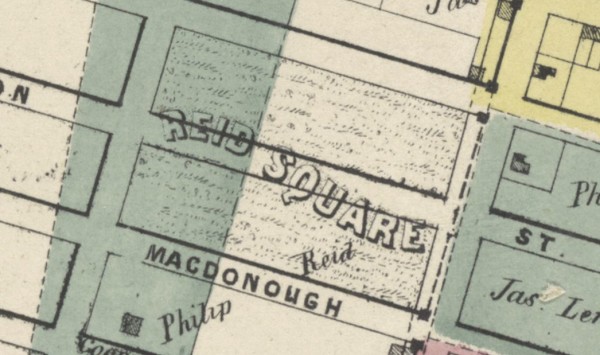
******************************************************************************************************************************** Brownstone Detectives investigates the history of our clients’ homes. The story you are about to read was composed from research conducted in the course of one of those investigations. Do you know the history of YOUR house? ******************************************************************************************************************************** Laid down by the Brooklyn street grid commissioners in the 1830s, Reid Square was a planned park that was to be comprised of two of Brooklyn’s city blocks in the Town of Bedford. Named after the owner of the farmland that the once-future park was to grace, Philip Reid, Reid Square never ended up being developed. The Square was to be bounded by Reid and Stuyvesant Avenues and Halsey and MacDonough Streets. Macon Street, which, for all intents and purposes, would have passed directly through the square at its center, was to be closed at that point. In 1869, however, as the park had been laid out but not improved, the Committee on Opening Streets of the Brooklyn City Common Council met and proposed a resolution to “draft an act to the Legislature to close Reid Square and lay down Macon Street from Stuyvesant to Reid aves.” This proposal was adopted and later in April of 1869, the Legislature passed the act, dooming Reid Square to an historical footnote. It is quite probable that powerful real estate speculators at the time forced the planned public square into its stillborn state, allowing the properties on these streets to be broken up into lots and then sold at auction for development purposes. Follow @BrownstoneDetec […]
AFTER “NEGRO,” BEFORE “COLORED,” Pt. II (1920)
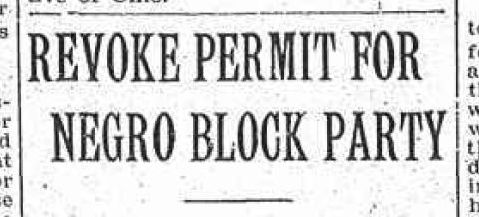
(Cont.’d from last week’s “After ‘Negro,’ But Before ‘Colored,’” Pt. I.) The permit for the “colored” Macon Street block party was revoked by the City at the last minute. Apparently, the white residents on Macon Street between Reid and Stuyvesant avenues, “who have been disturbed by the prospect of a block party there tonite for the benefit of a negro church are now at ease.” “The permit,” the July 1920 Brooklyn Eagle story noted, “which had been issued for roping off the block party” was revoked by the Highways Department, whose officials explained that Lucy Mayers had presented a petition from a number of residents on the block, asking permission for the party to be held.” However, as the residents of the block were predominantly white, when “some of them heard of the block party to be held for negroes they presented a counter petition with 140 names, a majority of the residents of the block, to the department, which then revoked the permit.” Police at the Ralph Avenue station said that “they had never been notified of the permit and they would have objected to the party,” if it had been held. The article does not say if the police meant that they would have objected to a party held by “colored folks” that was objected to by white residents, or if they would have objected to a “colored” block party, in general. The block party’s church committee stated that they were “returning the money for tickets bought for […]